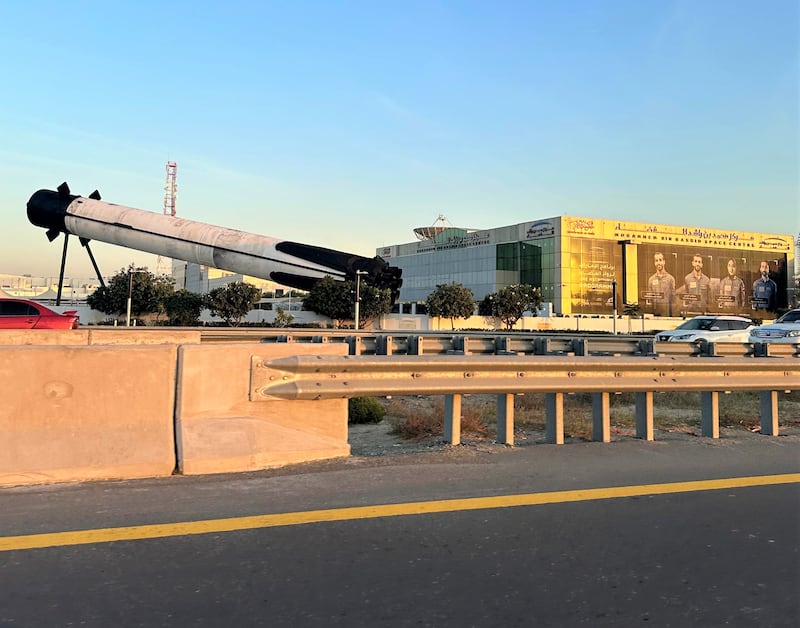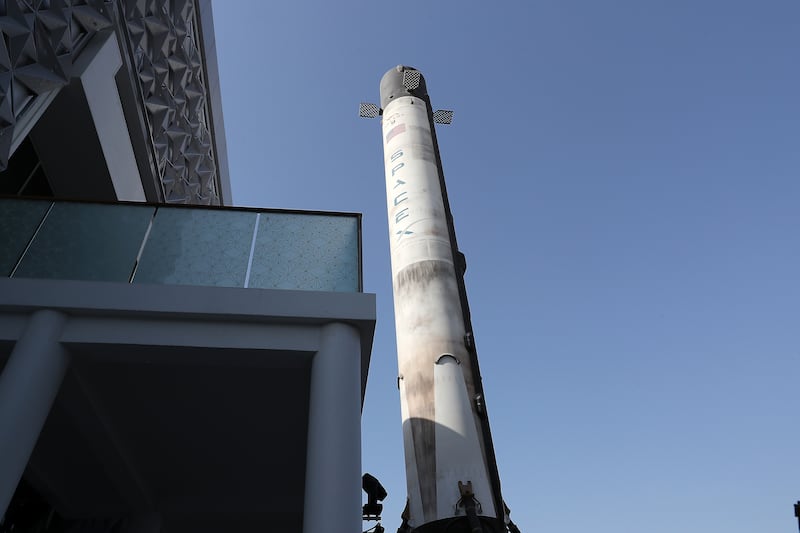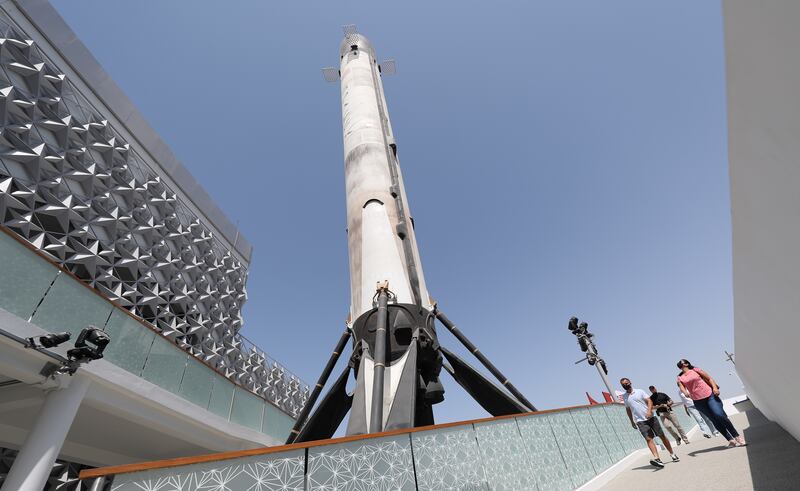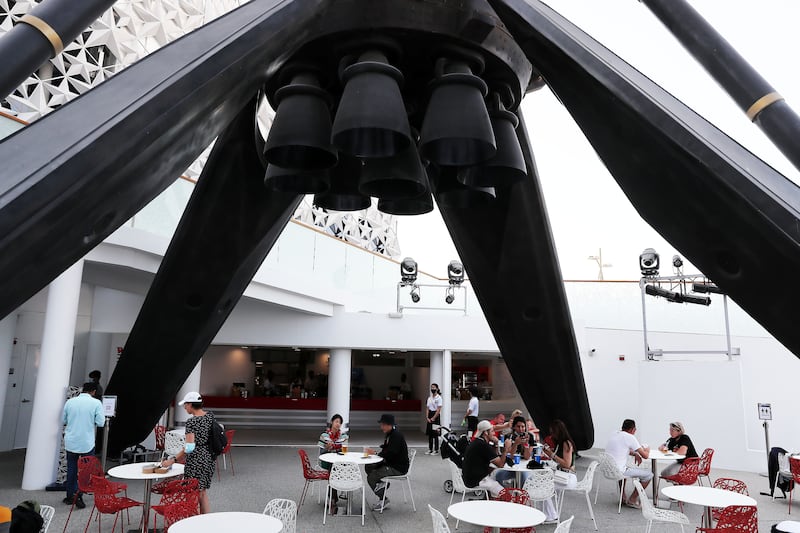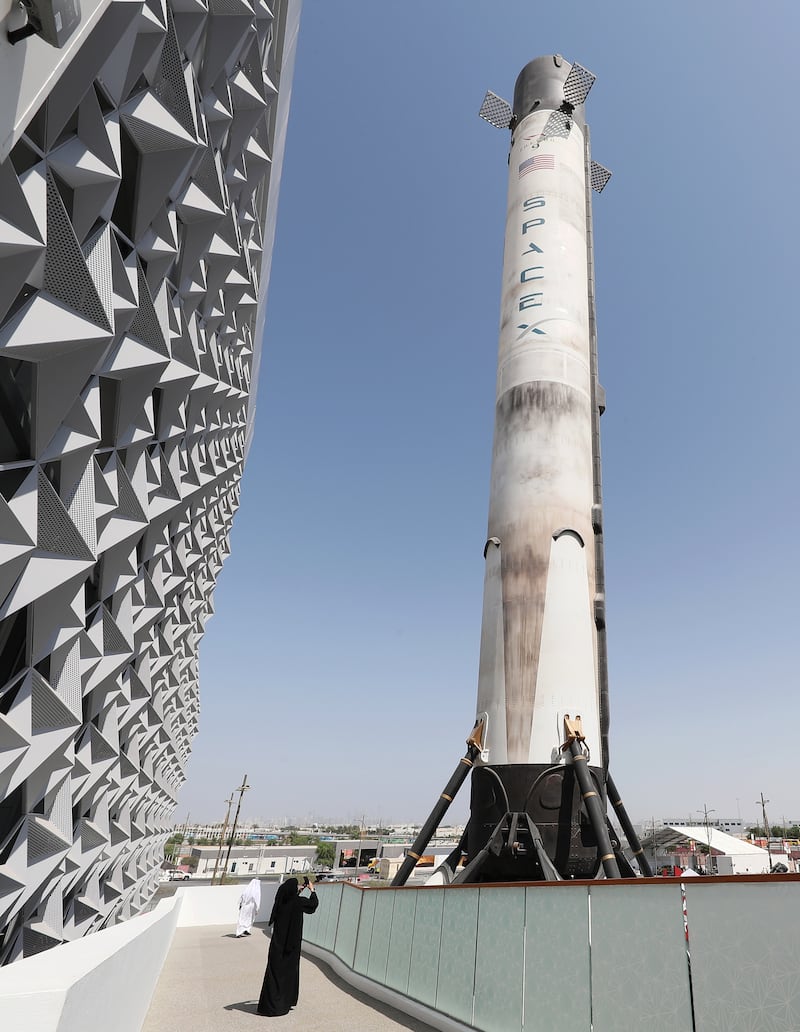An enormous SpaceX rocket model that was on display at Expo 2020 Dubai's US Pavilion has been moved to the Mohammed bin Rashid Space Centre.
Pavilion organisers had been looking for a permanent home for the 43-metre tall Falcon 9 booster replica – one of the most eye-catching displays at the world's fair, which was held between October 2021 March 2022.
Now, it is on display at the space centre, in Dubai's Al Khawaneej district.
“The US Mission to the UAE is excited to see the SpaceX Falcon 9 replica rocket that we proudly displayed at our Expo 2020 pavilion find a permanent home at the Mohammed bin Rashid Space Centre," Meghan Gregonis, the US consul-general in Dubai, told The National.
"This iconic American rocket, an important part of the UAE space programme, will be a stunning backdrop for future joint programmes."
The US Pavilion had a strong focus on space-themed displays and events, including Moon rock samples brought back by Apollo missions, a replica of one of its Mars rovers and a visit from astronaut Scott Kelly.
The model towered over the pavilion at the Expo 2020 Dubai site up until the end of March 2022 – complete with fake smoke, red lighting and sound effects to make the display even more realistic.
Sultan Al Neyadi, Minister of Youth, became the first Arab astronaut to blast off on a SpaceX rocket in March last year.
Alongside three fellow astronauts, he was aboard the Dragon capsule that separated from the rocket once it reached orbit.
UAE astronaut Sultan Al Neyadi lifts off into space
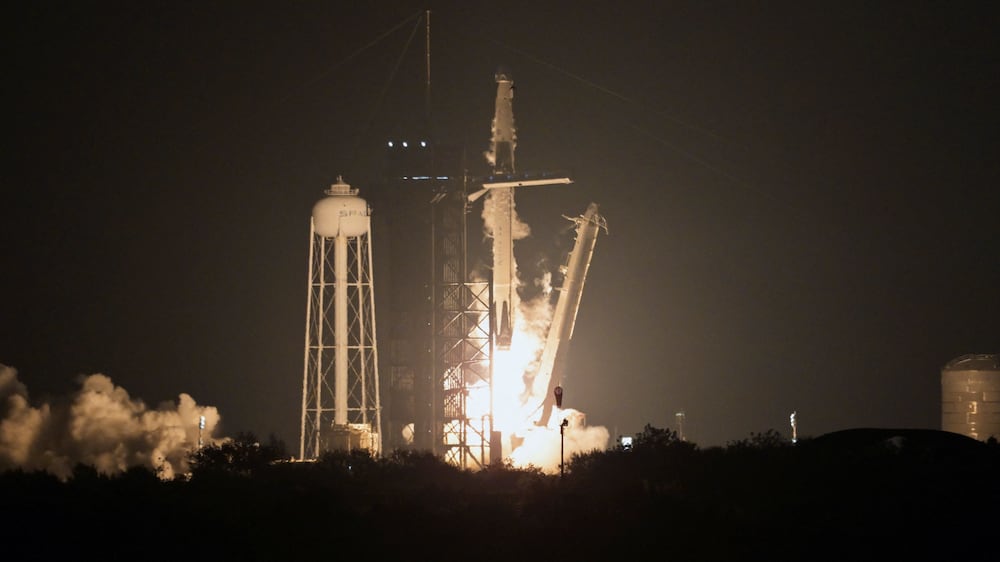
The spacecraft docked with the International Space Station 17 hours later, where its crew carried out a six-month science mission.
"The future of space exploration is bright, and the United States and the UAE are charting its course, side by side," said Ms Gregonis.
"Together, we've partnered on deep space communications for the Mars Hope mission, human spaceflight endeavours.
"Astronauts Hazza Al Mansouri and Sultan Al Neyadi's historic voyages not only solidified the UAE's central role in current space projects but also ignited the imaginations of a generation."
Two Saudi astronauts also launched aboard a SpaceX rocket in May last year, for an eight-day stay on the orbiting laboratory.
Rayyanah Barnawi, the first Arab woman to go on a space mission, and Ali Al Qarni brought the number of Arabs in space at one time to a record of three.
Dr Al Neyadi welcomed the Saudi astronauts into the space station with Arab hospitality – including offering them dates and water.
He assisted Ms Barnawi, a research scientist, with her science investigations on human immune cells.
She studied the inflammatory response of the cells in microgravity, including the changes in mRNA decay, a process that regulates gene expression changes in cells that can influence the effects of inflammation.
